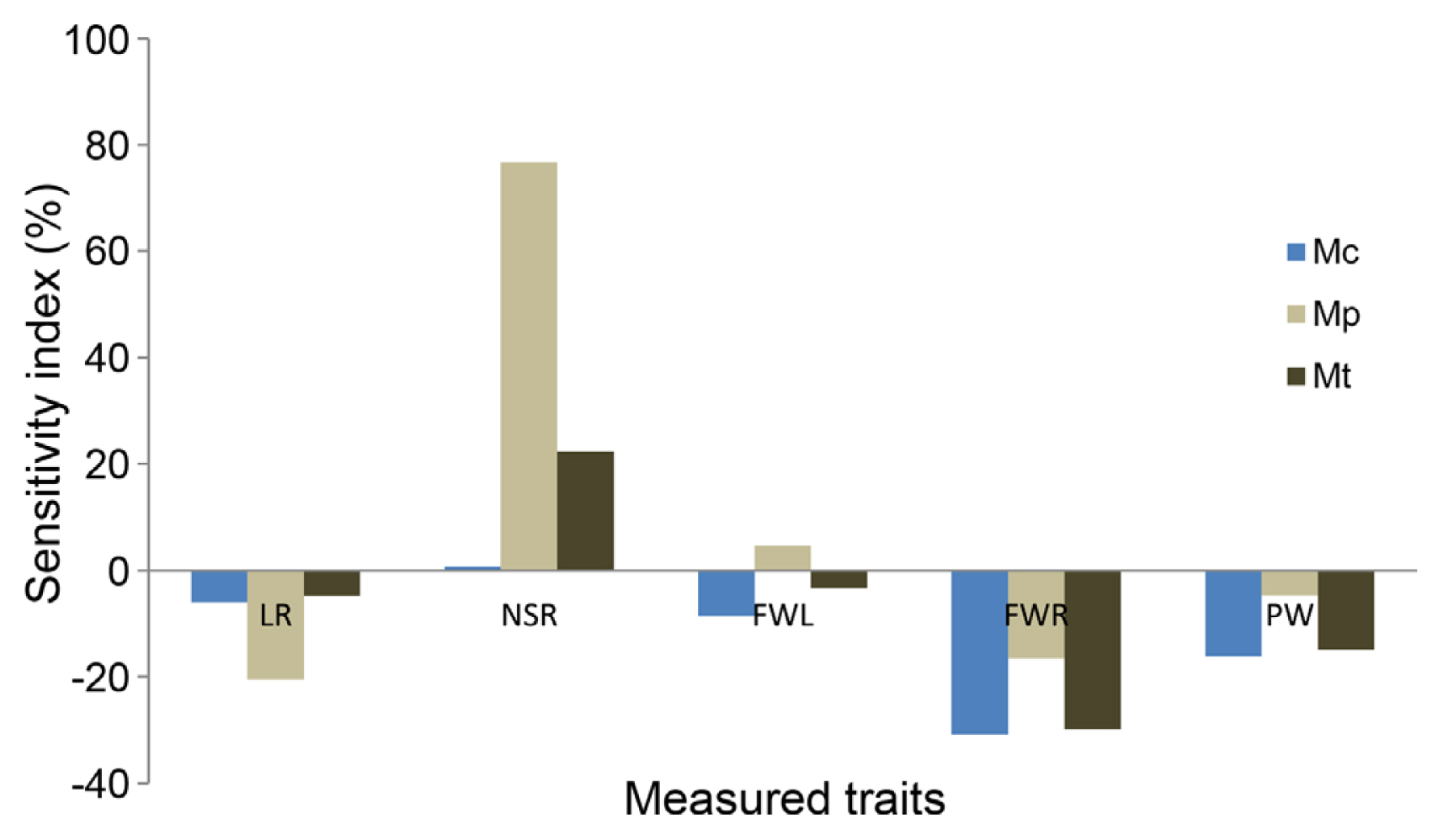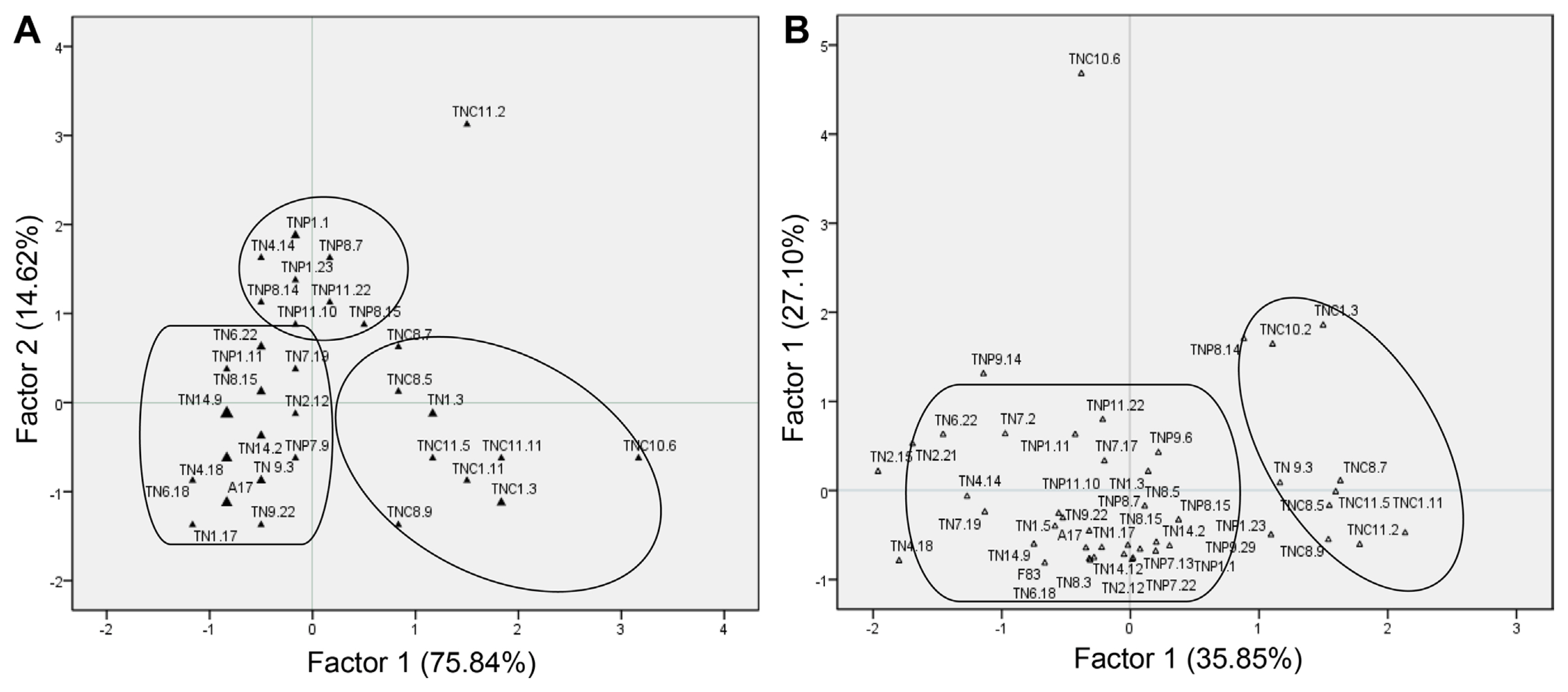Andrew, W. D. 1962. Susceptibility to damping-off in seedlings of Medicago denticulata Willd. and M. minima (L.) Bart. during the early post-emergence period. Aust. J. Biol. Sci 16:281-283.
Arraouadi, S., Badri, M., Jaleel, C. A., Djébali, N., Ilahi, H., Huguet, T. and Aouani, M. E. 2009. Analysis of genetic variation in natural populations of
Medicago truncatula of Southern Tunisian ecological areas, using morphological traits and SSR markers.
Trop. Plant Biol 2:122-132.


Arraouadi, S., Badri, M., Zitoun, A., Huguet, T. and Aouani, M. E. 2011. Analysis of NaCl stress response in Tunisian and reference lines of
Medicago truncatula.
Russ. J. Plant Physiol 58:316-323.


Badri, M., Ben Cheikh, N., Mahjoub, A. and Abdelly, C. 2016a. Morpho-phenological diversity among natural populations of
Medicago polymorpha of different Tunisian ecological areas.
Afr. J. Biotechnol 15:1330-1338.

Badri, M., Chardon, F., Huguet, T. and Aouani, M. E. 2011. Quantitative trait loci associated with drought tolerance in the model legume
Medicago truncatula.
Euphytica 181:415-428.


Badri, M., Ilahi, H., Huguet, T. and Aouani, M. E. 2007. Quantitative and molecular genetic variation in sympatric populations of
Medicago laciniata and
M. truncatula (Fabaceae): relationships with eco-geographical geographical factors.
Genet. Res 89:107-122.


Badri, M., Toumi, G., Mahfoudh, S., Hessini, K., Abdelguerfi-Laouar, M., Abdelguerfi, A., Aouani, M. E., Abdelly, C. and Djébali, N. 2016b. Diversity of response to drought in a collection of lines of
Medicago truncatula,
M. ciliaris and
M. polymorpha.
Crop Sci 56:3125-3132.


Badri, M., Zitoun, A., Soula, S., Ilahi, H., Huguet, T. and Aouani, M. E. 2008. Low levels of quantitative and molecular genetic differentiation among natural populations of
Medicago ciliaris Kroch. (Fabaceae) of different Tunisian eco-geographical origin.
Conserv. Genet 9:1509-1520.


Barbetti, M. J. 1983. Fungal foliage diseases of pasture legumes. J. Dept. Agric. West. Aust 24:4.
Barbetti, M. J. 2007. Resistance in annual
Medicago spp. to
Phoma medicaginis and
Leptosphaerulina trifolii and its relationship to induced production of a phytoestrogen.
Plant Dis 91:239-244.


Barbetti, M. J., You, M. and Jones, R. A. C. 2020. Medicago truncatula and other annual Medicago spp.: interactions with root and foliar fungal, oomycete, and viral pathogens. In: The model legume Medicago truncatula, eds. by F. J. de Bruijn, pp. 293-306. John Wiley & Sons, Inc, Hoboken, NJ, USA.
Bécard, G. and Fortin, J. A. 1988. Early events of vesicular-arbuscular mycorrhiza formation on Ri T-DNA transformed roots.
New Phytol 108:211-218.



Boerema, G. H., Dorenbosch, M. M. J. and Leffring, L. 1965. A comparative study of the black stem fungi on lucerne and red clover and the footrot fungus on pea.
Neth. J. Plant Pathol 71:79-89.


Brown, S. P., Grillo, M. A., Podowski, J. C. and Heath, K. D. 2020. Soil origin and plant genotype structure distinct microbiome compartments in the model legume
Medicago truncatula.
Microbiome 8:139.




Djébali, N. 2008. Etude des mécanismes de résistance de la plante modèle Medicago truncatula vis-à-vis de deux agents pathogènes majeurs des légumineuses cultivées: Phoma medicaginis et Aphanomyces euteiches. Ph.D. thesis. Université Toulouse III - Paul Sabatier, Castanet-Tolosan, France. 191.
Djébali, N. 2013. Aggressiveness and host range of Phoma medicaginis isolated from Medicago species growing in Tunisia. Phytopathol. Mediterr 52:3-15.
S. R. Ellwood, L. G. Kamphuis and R. P. Oliver 2006. Identification of sources of resistance to
Phoma medicaginis isolates in
Medicago truncatula SARDI core collection accessions, and multigene differentiation of isolates.
Phytopathology 96:1330-1336.


Falconer, D. S. and Mackay, T. F. C. 1996. Introduction to quantitative genetics. 4th ed. Longmans Green, Harlow, Essex, UK. pp. 464.
Graham, J. H., Frosheiser, F. I., Stuteville, D. L. and Erwin, D. C. 1979. A compendium of alfalfa diseases. American Phytopathological Society, St. Paul, MN, USA. pp. 65.
Haddoudi, L., Hdira, S., Ben Cheikh, N., Mahjoub, A., Abdelly, C., Ludidi, N. and Badri, M. 2021. Assessment of genetic diversity in Tunisian populations of
Medicago polymorpha based on SSR markers.
Chil. J. Agric. Res 81:53-61.

Keller, B., Feuillet, C. and Messmer, M. 2000. Genetics of disease resistance. In:
Mechanisms of resistance to plant diseases, eds. by A. J. Slusarenko, R. S. S. Fraser and L. C. van Loon, pp. 101-160. Kluwer Academic Publishers, Dordrecht, Netherlands.

Lamprecht, S. C. 1986. Reaction of annual Medicago species to Colletotrichum crown rot caused by Colletotrichum trifolii. Phytophylactica 18:183-185.
Lamprecht, S. C. and Knox-Davies, P. S. 1984. Preliminary survey of foliage diseases of annual Medicago spp. in South Africa. Phytophylactica 16:177-183.
Lesins, K. A. and Lesins, I. 1979. Genus Medicago (Leguminosae): a taxonomic study. Dr. W. Junk Publishers, The Hague, Netherlands. pp. 228.
Moussart, A., Onfroy, C., Lesne, A., Esquibet, M., Grenier, E. and Tivoli, B. 2007. Host status and reaction of
Medicago truncatula accessions to infection by three major pathogens of pea (
Pisum sativum) and alfalfa (
Medicago sativa).
Eur. J. Plant Pathol 117:57-69.


O’Neill, N. R. and Bauchan, G. R. 2000. Sources of resistance to anthracnose in the annual
Medicago core collection.
Plant Dis 84:261-267.


Pilet-Nayel, M.-L., Prospéri, J.-M., Hamon, C., Lesné, A., Lecointe, R., Le Goff, I., Hervé, M., Deniot, G., Delalande, M., Huguet, T., Jacquet, C. and Baranger, A. 2009.
AER1, a major gene conferring resistance to
Aphanomyces euteiches in
Medicago truncatula.
Phytopathology 99:203-208.


Rai, M. K., Tiwari, V. V., Irinyi, L. and Kövics, G. J. 2014. Advances in taxonomy of genus
Phoma: polyphyletic nature and role of phenotypic traits and molecular systematics.
Indian J. Microbiol 54:123-128.



Reid, R., Konopka, J. and Rihana, J. R. 1989. Needs and priorities collection of annual medic germplasm. In: Introducing of the ley farming to the Mediterranean basin, eds. by S. Christian, L. Materon, M. Falcinelli and P. Cocks, pp. 253-270. International Centre for Agricultural Research in the Dry Area, Aleppo, Syria.
Sampson, K. and Western, J. H. 1941. Disease of British grasses and herbage legumes. Cambridge University Press, London, UK. pp. 85.
Small, E. and Jomphe, M. 1989. A synopsis of the genus
Medicago (Leguminosae).
Can. J. Bot 67:3260-3294.

Tang, H., Krishnakumar, V., Bidwell, S., Rosen, B., Chan, A., Zhou, S., Gentzbittel, L., Childs, K. L., Yandell, M., Gundlach, H., Mayer, K. F. X., Schwartz, D. C. and Town, C. D. 2014. An improved genome release (version Mt4.0) for the model legume
Medicago truncatula.
BMC Genomics 15:312.




Tivoli, B., Baranger, A., Sivasithamparam, K. and Barbetti, M. J. 2006. Annual
Medicago: from a model crop challenged by a spectrum of necrotrophic pathogens to a model plant to explore the nature of disease resistance.
Ann. Bot 98:1117-1128.



Yaege, J. R. and Stuteville, D. L. 2002. Reactions of accessions in the annual
Medicago core germ plasm collection to
Erysiphe pisi.
Plant Dis 86:312-315.


Young, N. D. and Udvardi, M. 2009. Translating
Medicago truncatula genomics to crop legumes.
Curr. Opin. Plant Biol 12:193-201.














 PDF Links
PDF Links PubReader
PubReader ePub Link
ePub Link Full text via DOI
Full text via DOI Full text via PMC
Full text via PMC Download Citation
Download Citation Supplement1
Supplement1 Print
Print



